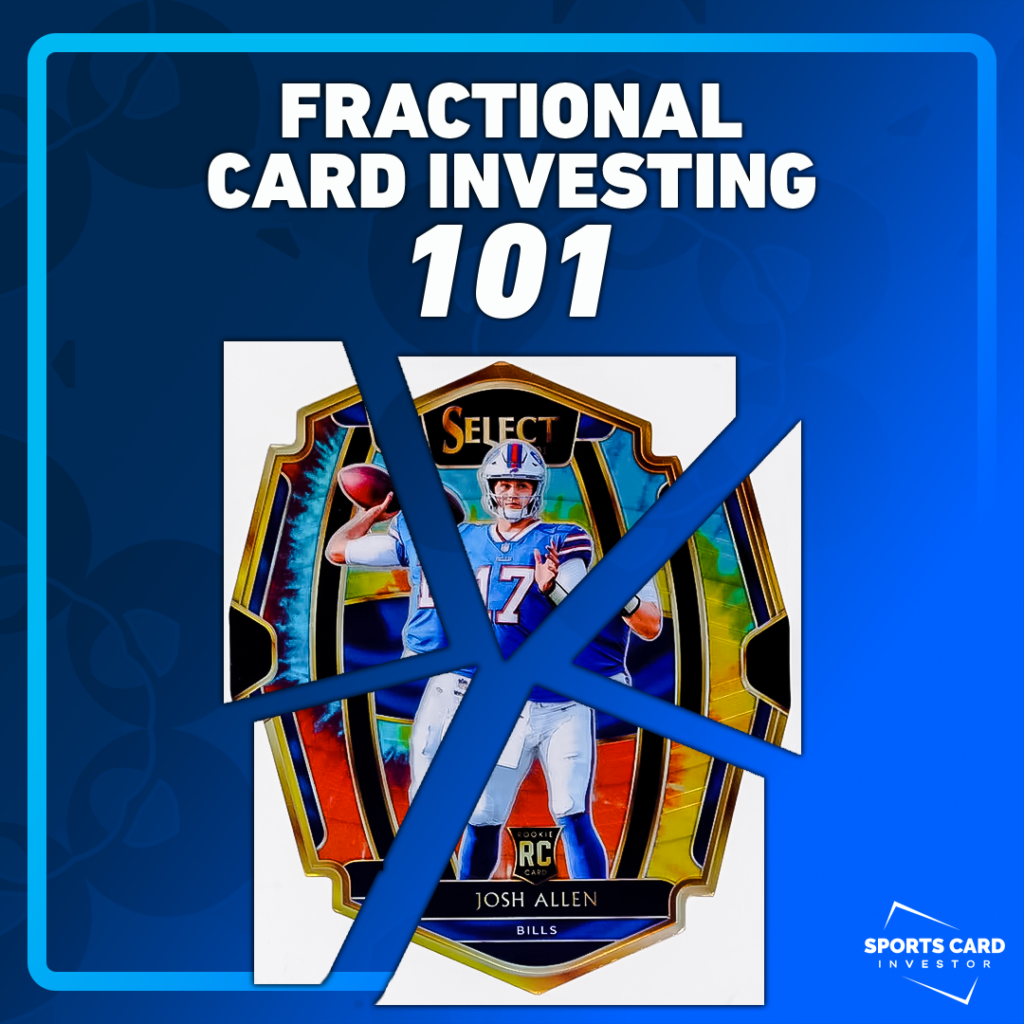
Fractional Card Investing 101
One of my most vivid childhood memories was when my uncle took my cousin and me on a fishing trip on the Jersey Shore. On that hot summer afternoon, we caught the largest fish on the boat and won some prize money that all the other fisherman pitched in. Despite the blazing hot weather and sweat we exuded while reeling the catch in, nothing could stop me from running to the card store and spending all of that money as soon as we got back to land.
For decades, the hobby has revolved around memories like that. Local card shops were everything. Children would spend their weekly allowance on packs and singles and, if they were lucky, their parents would drive them to the mall every few months to hunt for deals at larger card shows.
As we all know, the prices of sealed wax and graded singles have dramatically increased over the last several years. As the hobby has become more expensive and, to some extent, more exclusive, it’s not surprising that innovation has begun to propel an otherwise antiquated pastime.
Fractional ownership is a new spin on investing in cards and other collectables. Like stocks, the fractional route allows collectors to own a piece (or a “share”) of a valued collectible that may have otherwise been out of that person’s price range. In this article, we’ll dive into some of the most popular fractional investing platforms, explain precisely how fractional investing works and look at a few products that could present lucrative investment opportunities.
Rally
One of the leading platforms in fractional space is Rally. The company identifies alternative assets such as trading cards, rare books, watches and even cars and purchases them. Subsequently, Rally securitizes these items, effectively turning them into a “corporation.” Like a stock, investors have the opportunity to buy shares in those assets.
This type of functionality is interesting because it allows a broader range of people to participate in sports card investing. Stated differently, given the rising prices of wax and graded singles, applications like Rally provide an opportunity to create a diversified portfolio of different cards.
At press time, Rally was offering shares of an iconic Honus Wagner T206 that the company has valued at $1.65 million. Since most people don’t have that kind of cash sitting under their couch cushion, Rally’s $165 slices look appetizing.
Although Rally is not the only company in the fractional ownership space, it has introduced some interesting features in an effort to differentiate itself from the competition. For example, back in November Rally and Chicago-based artist Keenan Wells designed a set of cards that illustrate famous historical figures (Albert Einstein) and athletes (Jackie Robinson) in an 8-bit pixel format.
Liquid Marketplace
Another player in the fractional ownership sphere is Liquid Marketplace. Co-founded by social media personality Logan Paul, Liquid Marketplace brings the concept of the blockchain-powered Web3 to the hobby. Unlike other fractional investing platforms, Liquid Marketplace requires users to buy shares of LeBron James’ 2003 Topps Chrome and other assets using crypto tokens. Moreover, investors can join an exclusive Discord community to ask questions, network and learn about upcoming offerings.
Otis
Perhaps a marketplace positioned somewhere in between Rally and Liquid is Otis. Otis identifies as the “stock market for culture.” While trading cards are a big part of the platform, investors can also buy pieces of NFTs, video games and sneakers. The company’s newsletter, Cultured, is free and geared toward educating investors on themes and trends in the broader collectibles space. It is important to note that millennial trading app Public.com, which is privately held and valued at over $1 billion, acquired Otis earlier this year. This is an interesting move as Public looks to differentiate itself from other trading apps, providing investors with a broad suite of assets beyond traditional equities.
Collectable
This platform almost appears to be a hybrid of the three we’ve already discussed. Like Otis, Collectable investors can buy shares in assets beyond trading cards, including iconic sneakers and jerseys. Moreover, the company offers a weekly newsletter highlighting industry news and insights. And while Collectable mimics the functionalities of Rally or Liquid, the company does have some intriguing differences. Namely, users can consign their collectibles in an effort to retain some ownership while also capturing liquidity. The application also offers a comparable pricing tool to help investors potentially identify underpriced assets.
Owning 100% of a rare or low-pop card will provide the highest reward for an investor, provided that you bought and sold at the right prices. However, fractional investing allows you to own a diversified basket of cards across a broader spectrum. Although fractional ownership is in its early stages, the concept of democratizing investments in trading cards and other alternative assets, which have seen valuations steadily increase, is very interesting. For those thinking about card buying but do not have the risk appetite or capital to get individual players or sports, fractional ownership could be an interesting way to dabble in the hobby while also having the option of instant liquidity, which is not always the case after buying graded singles or sealed wax.
Track your collection and maximize your profit with Market Movers, the hobby’s most powerful sports card pricing platform! Learn more here.
Note to readers: If you purchase something through one of our affiliates, we may earn a commission.






